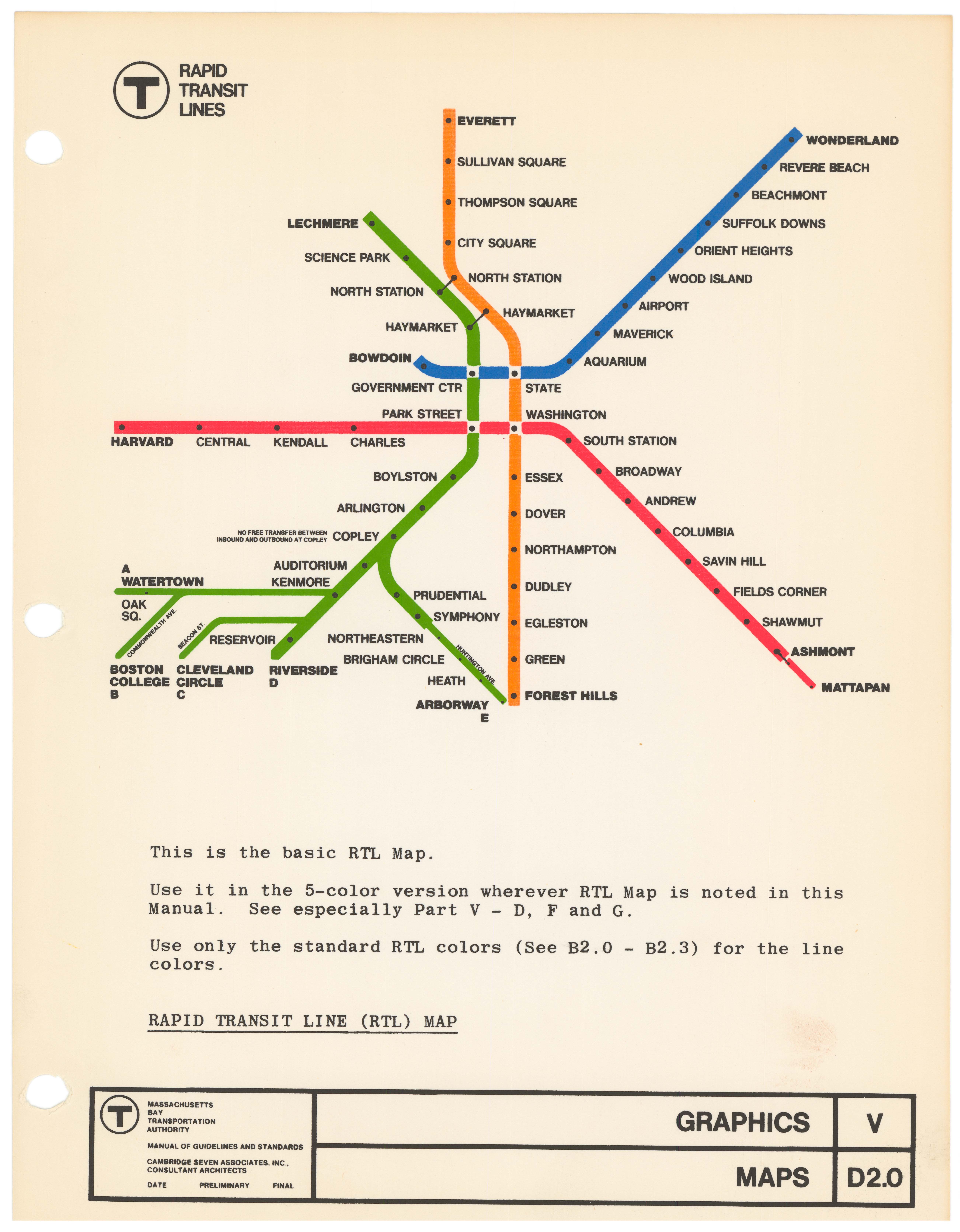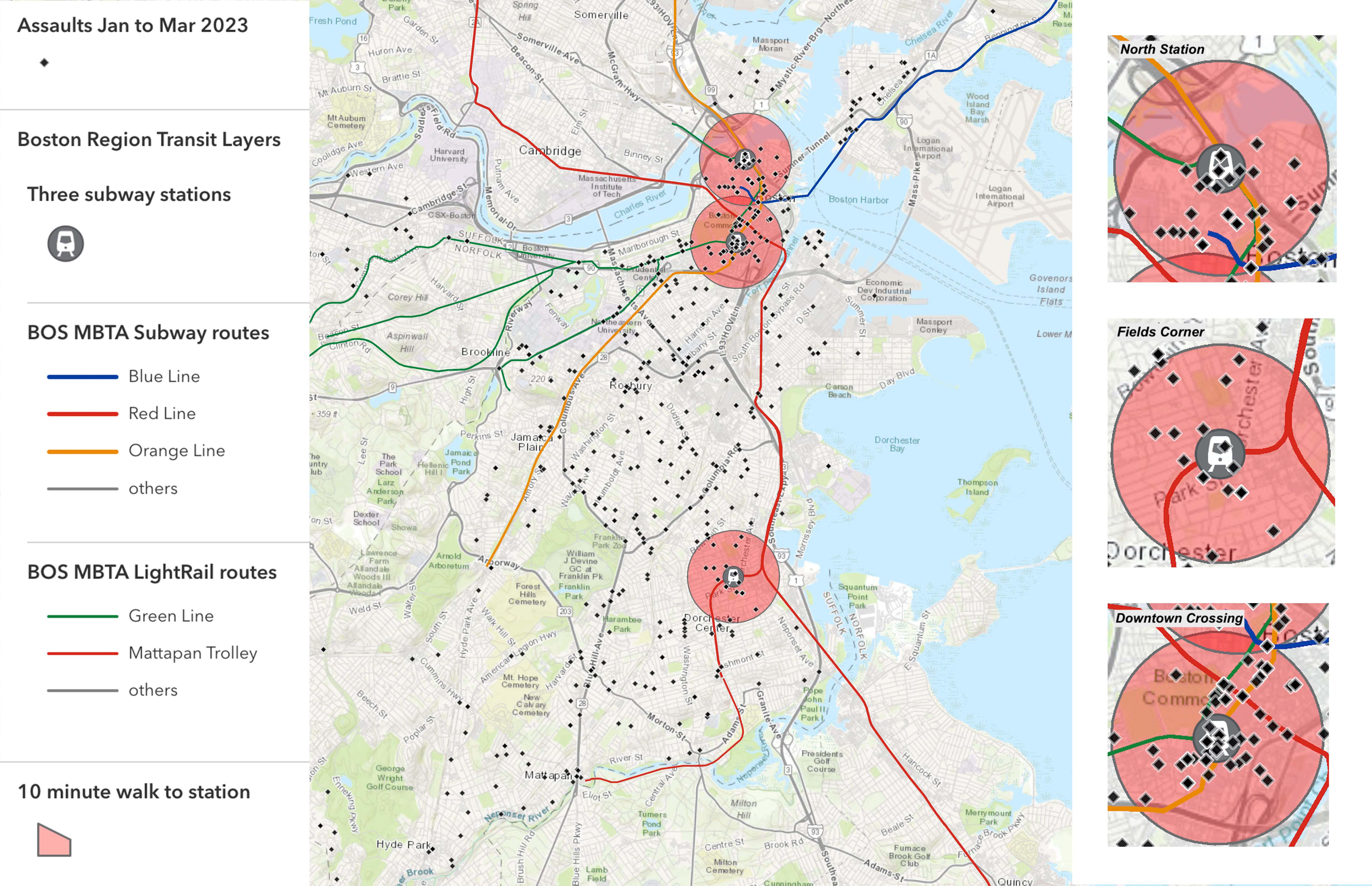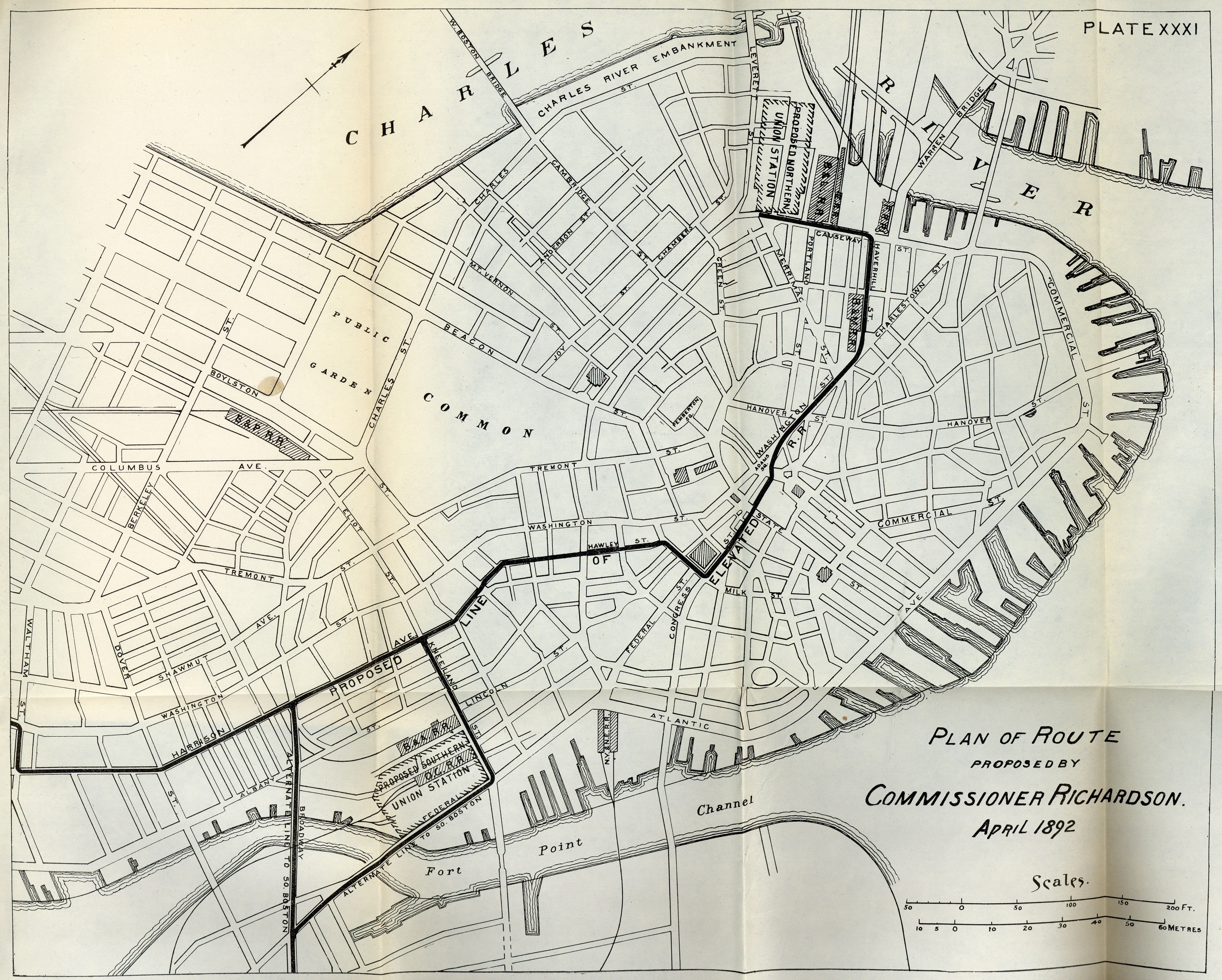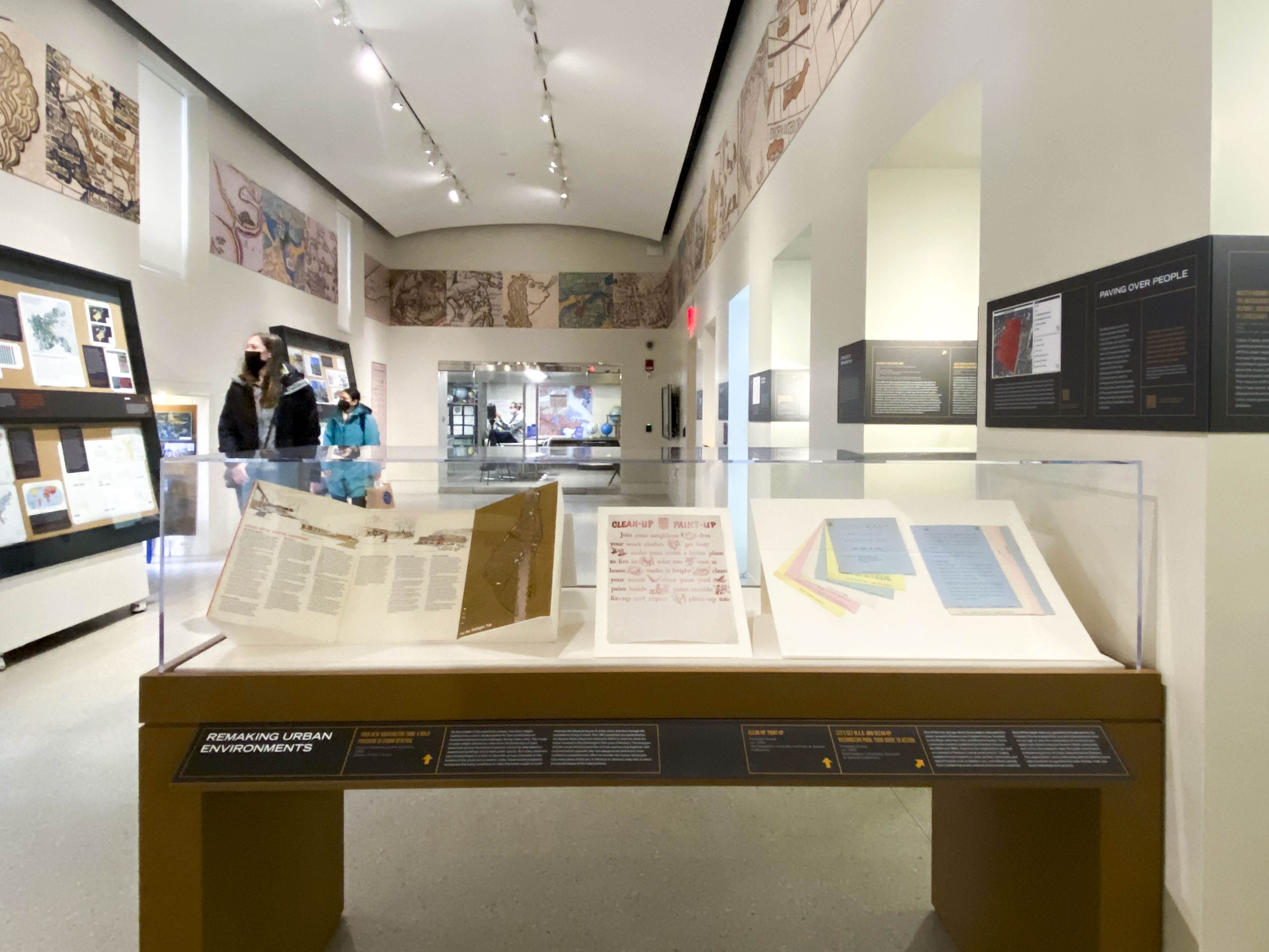Most people looking at transit maps aren’t looking at them in display cases in a museum. Instead, they’re using them for practical purposes as they move around, whether on a routine daily commute to work, on a special visit to see a friend or relative, or on one of the thous ands of other types of trips that weave together our experiences of urban space. This 1945 print G1.1 by the Boston artist John Woodrow Wilson invites us to contemplate the actual experiences of people navigating a transit system. Wilson, a trailblazing Black artist, shows a worker riding to their job at the Charlestown Navy Yard.
G1.1
Streetcar Scene
John Woodrow Wilson, 1922-2015
1945
Arts Department, Boston Public Library
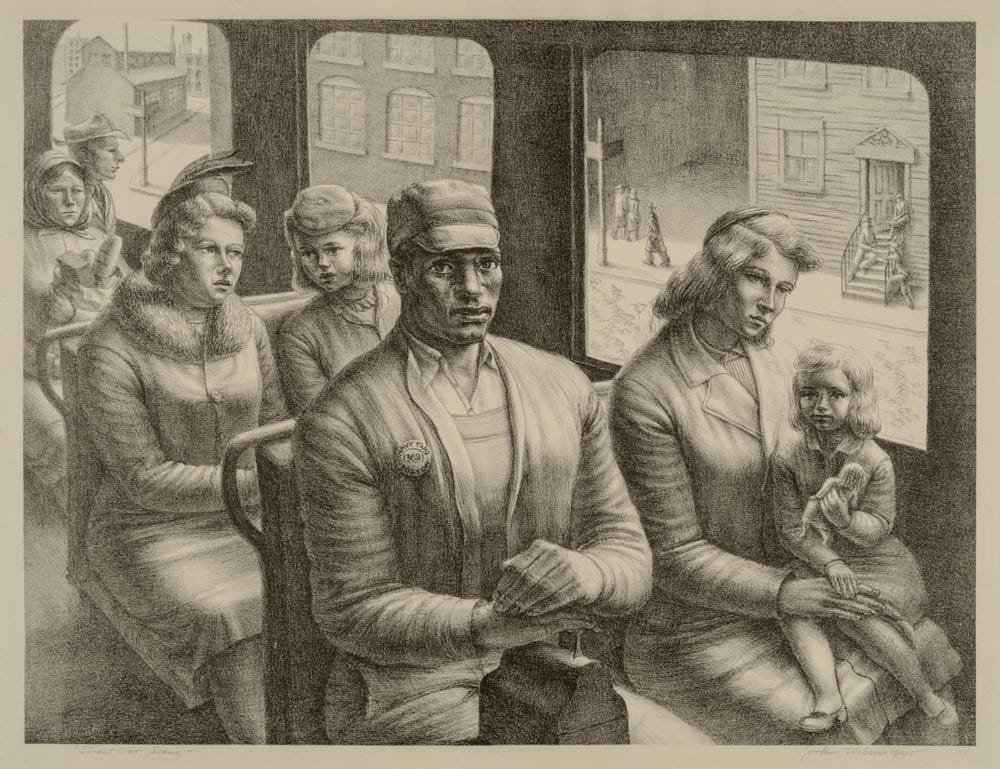
To the right of the print is an original window map from a Boston rapid transit car of the late 1940s. G1.2 This map shows the rapid transit line that connected Charlestown and Everett with Roxbury, where many Black Bostonians lived, including Wilson himself. The Navy Yard is labeled just beneath the Bunker Hill monument. Could the figure in Wilson’s print have been looking at this very map as he waited to get to work? What might he have been feeling about the geography of his city? How might he have experienced the vibrancy, the tension, and the rhythms of being in a public space?
![Image of [MTA Window Map]](https://s3.us-east-2.wasabisys.com/lmec-public-files/exhibitions/getting-around-town/g-1/G1.2-mta-map.jpg)
As you visit the exhibition, think about how these maps have become embedded in millions of lives throughout history. Transit maps aren’t just abstract color-coded lines. They form the structure of people’s everyday mobility and their experiences in a complicated, dynamic, and sometimes contradictory city. And as you think about how people got around town through the centuries, consider also that these systems are in a state of constant change and evolution. Taking into account the history of public transportation revealed in this exhibit, how will we build a public transit system for the decades and centuries to come?

